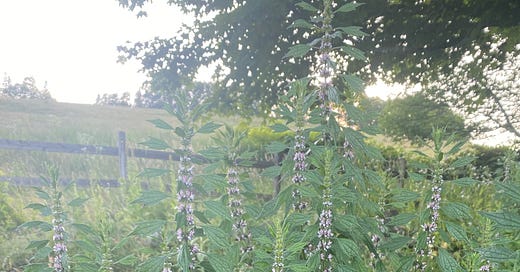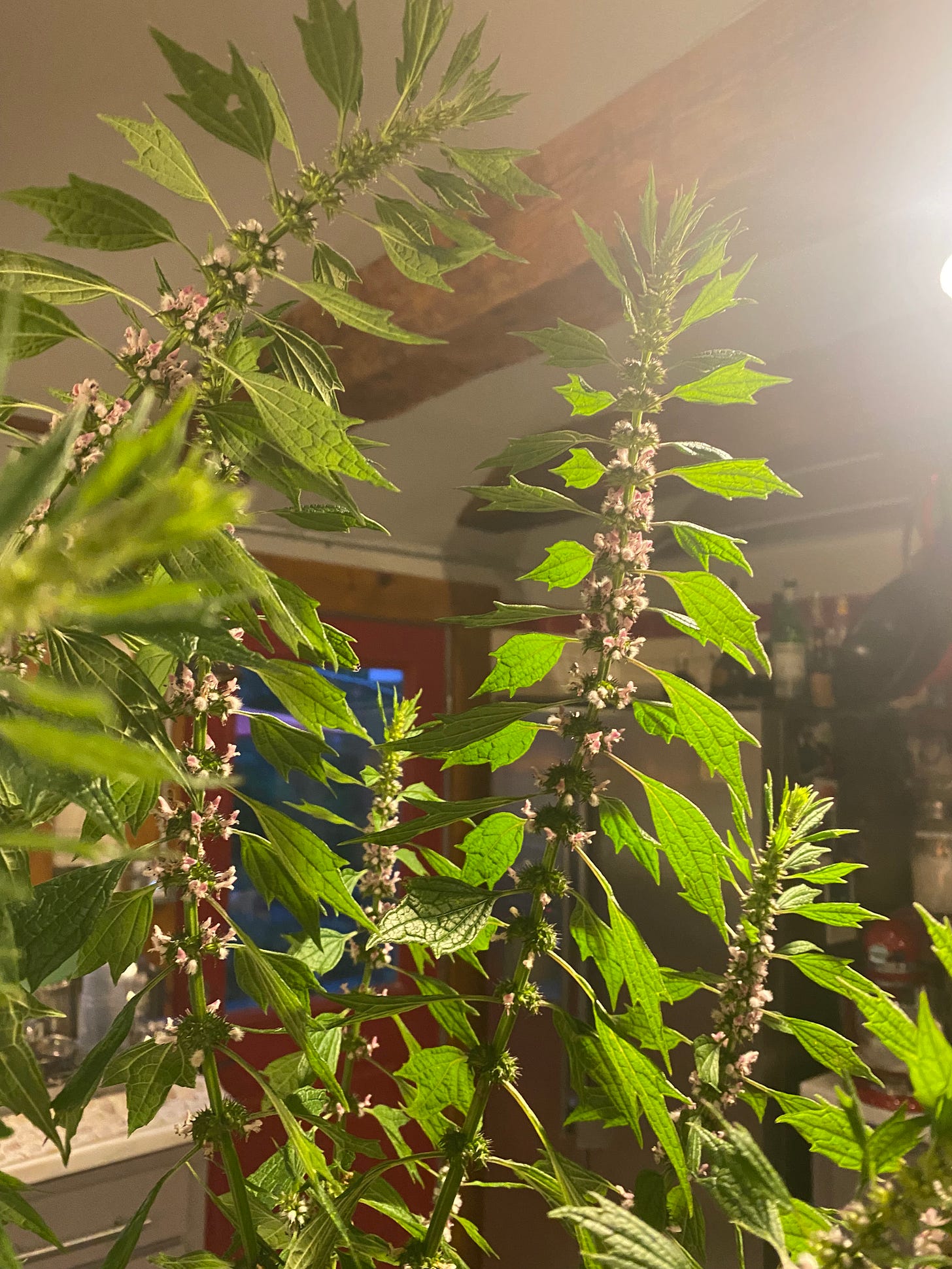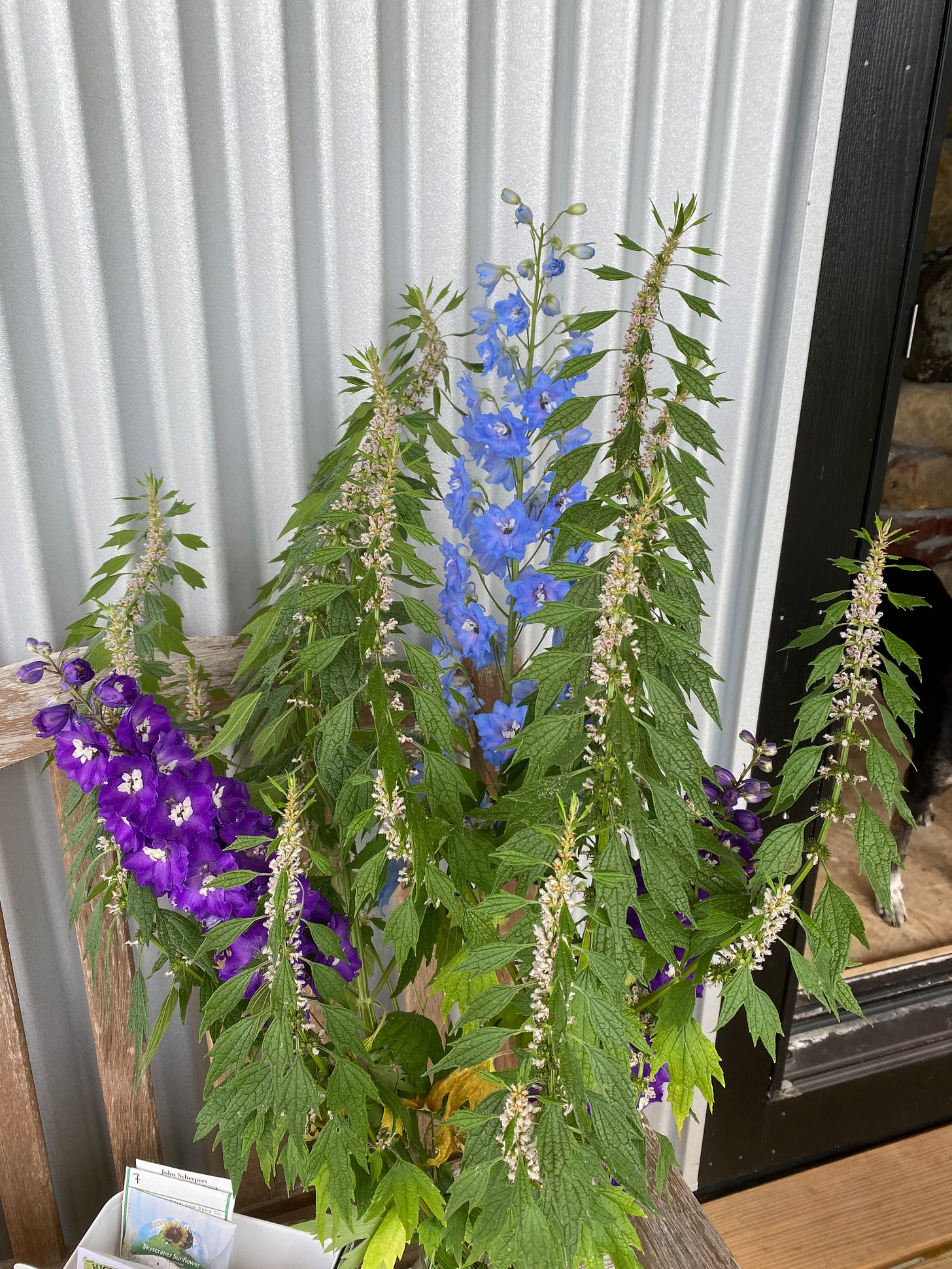I’m sitting here on the porch and it’s about to rain. The hay trucks are rumbling a low slow hustle down below. (I can still hear my grandmother’s voice as she would grouse, “They better get that hay up before it starts…” Hay on the ground gives me anxiety to this day! Haha!) The smell of milkweed is blaring and I’m in heaven. Everyday I’m becoming more comfortable in the certainty that the decision to only mow meadow paths and not expanses of “lawn” around my house was absolutely the best choice since I am not a hay merchant. I’m still trying to figure out what kind of “farmer” I am. (See last week’s post.) Most of the farm is habitat – milkweed and wild native species of plants and trees for bugs, birds, and creatures to live in all together like they are supposed to.
Since I stopped “The Big Mow” I’ve been exploring places close to the house I’ve known forever, and they suddenly seem brand new and command my full attention. Most of the plants are taller than me. Birds, snakes, groundhogs, butterflies, and deer just appear and scramble away from anywhere at any time. I’m on alert, but it’s a good alert, not the resting trauma alert I’m used to. It’s an excited curiosity.
There is an impressive display of gargantuan herbal plants where my horses had been pastured last summer and the poop was rich. Nettles, comfrey, bee balm, and sunflowers in sizes I’ve never seen; it’s a forest everywhere I walk. The most impressive plant in this field is motherwort. Leonurus cardiaca, also called “lion’s ear”, is in the mint family, squarish stem and all. It also resembles stinging nettle which could be a good way to familiarize yourself with the fact that it has sharp little spines hidden behind its little pinkish flowers. It bites. I have a nasty wound on my inner right thumb that looks like a snake bite and it’s a little infected so I can’t bend it all the way. That’s the price of grabbing onto shit like a toddler…
Motherwort isn’t native to North America and is considered invasive outside of a container. But has many useful properties, and is often used in medicine, herbal and Western. The thing about motherwort that’s captivated me here though is its intricate H.R. Giger-esque beauty. It looks softly dangerous? In full bloom it looks like a huge bouquet of graceful human spines with tiny woolly flowers pinning each vertebrae together like a bizarre Marie Antoinette wig. If that wasn’t enough, from each flower cluster spring two opposing leaves that look so delicate and strange, like a drawing in a medieval manuscript of a flying fish’s fin; some lacy sea monster’s oar. The leaves travel down the entire length of the plant and the effect of the whole picture is that of an upside down chandelier coming out of the ground. It simply takes my breath away. And, as I finish this post, I’m happy to report that my neighbor got all they hay up in time :)








wow it's so beautiful. catnip for bees and butterflies {*butterfly farmer* ! )
The other day I took photos of the flowers in our yard, as I often do. Unknowingly, I took a photo of motherwort. It was only when I zoomed in that I noticed the baroque intricacy of the flowers. A day later I read your post and upon reading your description I knew exactly what you were describing. Thanks for the enrichment.